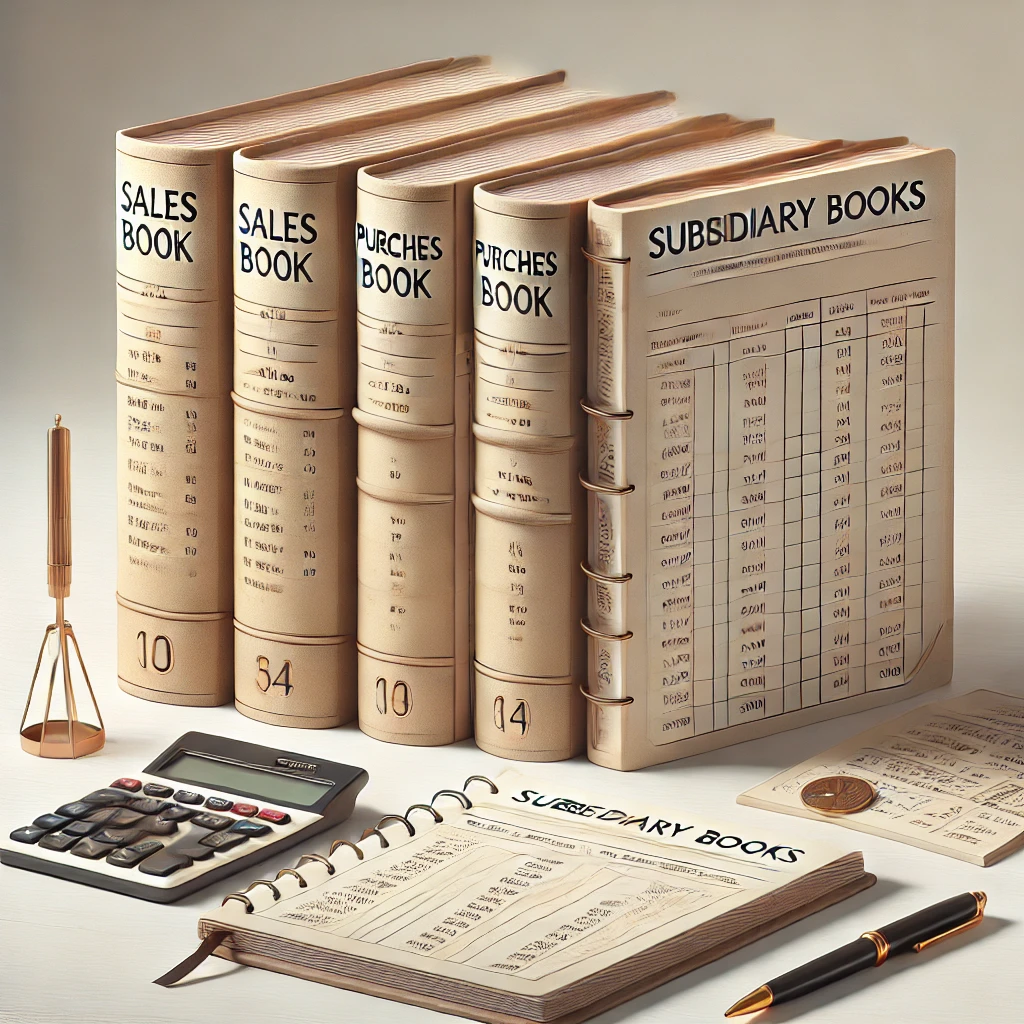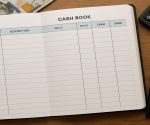A subsidiary book is an accounting record that tracks similar transactions. It helps simplify the main ledger by breaking out certain kinds of financial transactions into separate books, thereby simplifying the accounting process. Subsidiary books are also called books of original entry or special journals. These books are used by a business to bring apart different types of transactions so the manipulation of data is effective and error-free.
What is Subsidiary Book?
A subsidiary book is a journal-type of detailed record in accounting, which represents a book used in account logging similar types of financial transactions. Subsidiary books form part of the overall double-entry accounting system and bridge the business’s daily transactions with the general ledger. Subsidiary books simplify the process of bookkeeping by regularly categorizing and recording similar transactions together, thereby minimizing errors and simplifying the process of posting to the ledger. Using subsidiary books helps in the effective preparation of accounting data by a business in a very organized and traceable manner with the aid of accuracy, therefore perfect for creating some effective financial analysis and reports.
Importance of Subsidiary Books
The role of subsidiary books in accounting is crucial for businesses of all sizes. They allow for:
- Improved Organization: By classifying transactions into specific categories, these books keep the general ledger free from unnecessary clutter.
- Efficient Data Entry: Subsidiary books make it easier to record transactions as they happen, improving the speed and accuracy of data entry.
- Error Reduction: Recording similar transactions in one place helps reduce the chances of errors in financial records.
- Better Financial Analysis: These books provide a clear view of financial transactions, aiding in the effective analysis and decision-making process.

Types of Subsidiary Books
Subsidiary books are specialized journals designed to record particular types of transactions separately. The main types include:
Purchase Book
The purchase book is one of those accounts in which purchases of goods or raw materials intended for production or resale are recorded. It does not bear cash purchases; any transaction involving cash is accounted for in the cash book.
Example Format of Purchase Book
| Date | Supplier’s Name | Invoice Number | Details of Goods | Amount (INR) |
|---|---|---|---|---|
| 01/10/2024 | ABC Traders | INV001 | 100 units of product A | 50,000 |
Sales Book
The Sales Book records every single credit sale of goods. That means sales transactions made on credit go to the sales book, while cash sales go straight into the cash book.
Example Format of Sales Book
| Date | Customer’s Name | Invoice Number | Details of Goods Sold | Amount (INR) |
|---|---|---|---|---|
| 02/10/2024 | XYZ Enterprises | INV002 | 150 units of product B | 75,000 |
Purchase Returns Book
This subsidiary book is also known as the Returns Outward Book, which records goods returned to suppliers due to defective returns, wrong deliveries, and any other reasons according to their policy. This is useful for tracking returns efficiently.
Example Format of Purchase Returns Book
| Date | Supplier’s Name | Credit Note Number | Details of Returned Goods | Amount (INR) |
|---|---|---|---|---|
| 05/10/2024 | ABC Traders | CN001 | 20 units of product A | 10,000 |
Sales Returns Book
The sales return book, or returns inward book, is a book through which returns are entered for goods returned by customers back to the business. The books are created mainly due to such requirements; sometimes, these goods may have defects, some may be in excess quantity, while others might return if dissatisfied with the product.
Example Format of Sales Returns Book
| Date | Customer’s Name | Credit Note Number | Details of Returned Goods | Amount (INR) |
|---|---|---|---|---|
| 06/10/2024 | XYZ Enterprises | CN002 | 10 units of product B | 5,000 |
Cash Book
The cash book is one of the important subsidiary books that shows the cash received and paid. It serves as a journal and ledger account, summarizing all cash flows happening within the firm.
Example Format of Cash Book
| Date | Particulars | Cash Receipts (INR) | Cash Payments (INR) | Balance (INR) |
|---|---|---|---|---|
| 07/10/2024 | Opening Balance | 50,000 | 50,000 | |
| 08/10/2024 | Received from Sales | 25,000 | 75,000 | |
| 09/10/2024 | Paid to Supplier | 20,000 | 55,000 |
Journal Proper
Transactions that do not fall anywhere else within the subsidiary book, such as opening entries, adjustments, depreciation, and closing entries are recorded in the Journal Proper. It also be referred to as General Journal.
Example Entries in Journal Proper
| Date | Particulars | Debit (INR) | Credit (INR) |
|---|---|---|---|
| 10/10/2024 | Depreciation on Machinery | 15,000 | |
| Accumulated Depreciation A/c | 15,000 |
Advantages of Subsidiary Books
Subsidiary books offer a variety of benefits that enhance accounting efficiency and accuracy:
- Detailed Record-Keeping: They offer information on any similar transactions, which would easily be recovered in case there is a need to access them.
- Reducing Posting Errors: The organization of each transaction into specific categories reduces the chances of making mistakes in a general ledger.
- Effective Posting: The summation of various transactions in subsidiary books before transferring them to a ledger saves time and man-hours compared to posting individually.
- Internal Control: Subsidiary books help in better internal control as they segregate duties and make it easier to trace discrepancies.

Subsidiary Books Format
The formats of the various subsidiary books are different from one another and depend on the type of transaction for which they are intended to be recorded. Some of the commonly used standard formats in accounting are as follows:
Purchase Book Format
| Date | Supplier’s Name | Invoice Number | Total Amount |
|---|---|---|---|
| 01/10/2024 | Supplier A | 1234 | 50,000 |
Sales Book Format
| Date | Customer’s Name | Invoice Number | Total Amount |
|---|---|---|---|
| 02/10/2024 | Customer B | 5678 | 75,000 |
The above formats help in maintaining a structured and organized approach to recording business transactions.
Conclusion
Subsidiary books mostly help make accounts easier by classifying and recording similar transactions systematically. The financial data management becomes more organized, and the errors are reduced. When a ledger posting is made more efficient using these books, the business can record transactions that offer easier analysis and better insights into the health of finances.
What is Subsidiary Book FAQs
What is the main purpose of a subsidiary book?
Subsidiary books help in organizing and recording similar types of financial transactions, reducing the burden on the general ledger and improving the accuracy of financial data.
How many types of subsidiary books are commonly used in accounting?
There are seven primary types of subsidiary books, including the Purchase Book, Sales Book, Purchase Returns Book, Sales Returns Book, Bills Receivable Book, Bills Payable Book, and Cash Book.
Why do businesses prefer to use a Cash Book?
The Cash Book serves a dual purpose, acting both as a subsidiary book and a ledger, making it an efficient tool for tracking all cash-related transactions.
How does a subsidiary book differ from a ledger?
While a subsidiary book records the first entry of similar transactions, the ledger summarizes these entries to facilitate the preparation of financial statements.
Can subsidiary books help in financial analysis?
Yes, subsidiary books offer detailed information that aids in accurate financial analysis, helping businesses make informed decisions based on clear transaction data.


